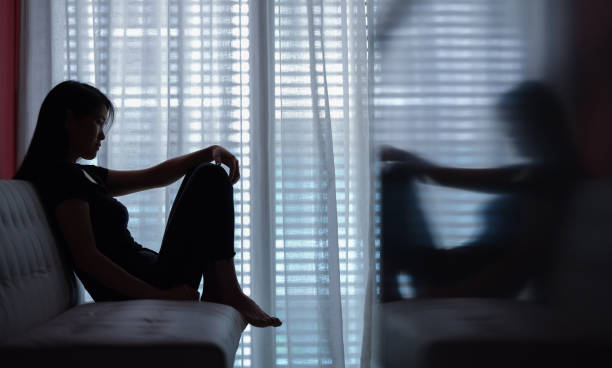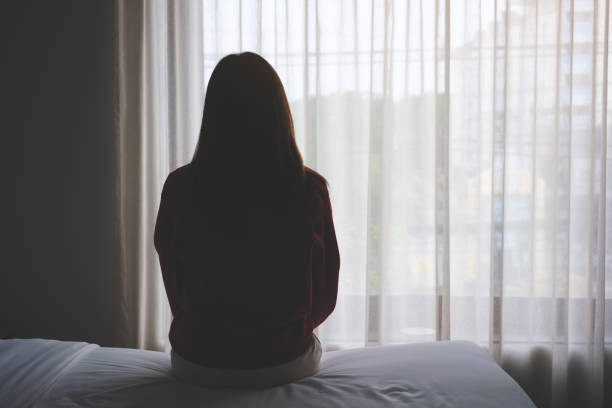Signs of Bipolar Disorder in Your Child
Does your child frequently alter dramatically in attitude and behavior? Does your child behave differently from other kids in excitement or irritability? Do you find that your child has severe highs and lows in cycles more frequently than other kids? Does your child's behavior at home or school change due to these mood swings?
Bipolar disorder is a brain disorder that can cause extraordinary fluctuations in mood, energy, activity level, and day-to-day functioning in some kids and teenagers who exhibit these symptoms. Children and teenagers with bipolar disorder can improve over time with treatment. To learn more about bipolar disorder, continue reading.
What is Bipolar Disorder
A mental health condition known as bipolar disorder causes markedly high and low moods. Lows are times of depression, while highs are times of mania or hypomania. You could experience both joy and depression at the same time due to mood fluctuations, which can become confusing. Though they can happen at any age, bipolar disorder symptoms typically first appear in the early stages of adulthood. Sometimes, they can occur in children.
Types of Bipolar Disorder
There are four common types of bipolar disorder. Bipolar I and II are the most common types.
Bipolar I
To have bipolar I, a person must experience manic episodes. For an event to be considered a manic episode, it must:
- involve mood swings or actions that are out of character for the person.
- Be present for most of each day, almost every day, of the episode
- last at least a week and may be so severe that the sufferer requires emergency medical attention.
Although depressive episodes are common in people with bipolar I, a depressive episode is not necessary for diagnosing bipolar I. The patient must not have another illness that could account for the symptoms for bipolar I to be diagnosed.
Bipolar II
Bipolar II also involves high and low moods. Still, depressive symptoms are more likely to dominate, and manic symptoms are less severe. This less severe type of mania is known as hypomania.
For a diagnosis of bipolar II disorder, a person must:
- have gone through at least one significant depressive episode
- possess a history of at least one hypomanic event
- not possess a disease that could account for the symptoms
What Causes Bipolar Disorder in children?
It's unclear what exactly causes bipolar disorder in children. However, several factors may increase a child's risk of developing this disorder.
- Family History: Bipolar disorder is more likely to affect children who have a parent or sibling who has the condition. A first-degree relative has bipolar disorder around five times more likely to occur.
- Anxiety Disorder: Many children with bipolar disorder also experience significant anxiety.
- Neurotransmitters: Bipolar disorder is a brain development disorder that most likely involves variations in neurotransmitters, brain architecture, and how particular brain regions work.
- Environment: Bipolar disorder can be brought on by stress, the death of a loved one, and abuse. Achieving an honor or success, for example, can be a source of both positive and negative stress, which can contribute to the onset of bipolar disorder symptoms.
8 Signs of Bipolar Disorder in Your Child
Every child goes through regular mood swings. Typically, these ups and downs are an expected part of growing up. To rule out other diseases, a psychiatrist should assess children with bipolar disorder-like symptoms but a chronic course. If your child exhibits any of these 10 signs, you might consider getting them checked for bipolar disorder.
#1. Manic Episodes
According to the American Academy of Child & Adolescent Psychiatry (AACAP), some indications that your child may be going through manic episodes include unrealistically high levels of self-esteem, such as thoughts of having special superpowers, increases in energy, and a decreased need for sleep. The ability to go without much sleep for days without feeling tired; quick thinking and talking; and repeated high-risk behavior, such as sexual promiscuity, reckless driving, or drug and alcohol abuse.
#2. Anger and Rage
All kids become furious occasionally, but kids and teenagers with bipolar disorder often experience a high degree of rage. This may result from violence, such as hitting people or damaging their toys. Because they frequently lack self-control, children who experience bipolar fury can experience intense rage that lasts for hours.
#3. Depressive Episodes
Low energy, fatigue, poor concentration, decreased enjoyment of favorite activities, decreased appetite or a significant change in eating habits, and complaints of physical illnesses. Such as stomach aches, headaches, and thoughts of death are some of the characteristics of this abnormal state for children or teens.
#4. Changes at School
According to the National Alliance on Mental Illness, children's symptoms often indicate problems in the classroom. They might see a decline in their grades, stop participating in sports or other extracurricular activities, be expelled from school or detained due to drug use or fighting, engage in dangerous sexual behavior, or even talk about dying or even ending their own life. By speaking with them, determine whether your child's teacher or guidance counselor observes similar behaviors to what you do at home.
#5. Severe Fluctuations in Mood
Rapid cycling, or alternating between manic and depressive moods over a shorter period or even within the same day, is more common among bipolar youngsters. It's typical to observe a pattern of pronounced changes in mood, energy, and daily routines that make it difficult to operate in class, with friends, or at home.
#6. Abnormal sleeping patterns
Depending on the episode, your child may sleep too much to worry about. Or, on the opposite spectrum, they may sleep very little and appear high-strung and overly anxious.
#7. Flights of Fancy
Eric Youngstrom, Ph.D., a bipolar research expert, asks parents if their child is overly giddy and goofy at unexpected times, like bedtime and first thing in the morning, and whether the joy is happening too often intensely or lasting too long. Although less frequent than symptoms of rage and anger, children and teens experience elation, grandiosity, or mania, which could be a fundamental signal in an initial assessment.
#8. Family Connection
According to child psychiatrist Dr. Rosalie Greenberg, most kids have a family history of mood disorder or bipolar disease. If a child's parents or siblings also suffer from bipolar illness, their risk of developing the condition is raised. However, the influence of genetics is not always there, and a child with a family history of bipolar disorder might not experience the illness themselves.
Treatment for Bipolar Disorder in Children
Although there is no known cure for bipolar disease, children can lead everyday lives when given the proper care. Bipolar disorder in children is managed by doctors using medication and therapy.
Medication
Your child may benefit from using various prescription drugs to control their symptoms. To manage their symptoms, children should use the fewest number of drugs and the lowest dose possible. Before discovering the ideal course of treatment, your child may need to try a few different medications and dosages. It's critical to inform doctors of any adverse effects and avoid abrupt medication discontinuation. It can be harmful to abruptly stop taking drugs.
Talk Therapy
There are several types of talk therapy accessible. These are frequently combined with pharmaceuticals. Additionally, therapy isn't just for your youngster. Therapy can be beneficial for the entire family. It can assist parents and caregivers in understanding what their child is going through.
Takeaways:
Children with bipolar disorder suffer from a severe condition. The relationships between the parents and other family members may be significantly impacted. Families are increasingly being included in counseling. For assistance and treatment for the entire family, ask your doctor for a recommendation from a therapist.
Also, remember that your child isn't acting out on purpose. Instead, they are coping with problems beyond their control. Patience, comprehension, and a listening ear can all be beneficial. Knowing your child's bipolar disorder symptoms will enable you to assist them in getting treatment and maintaining a high quality of life. Bipolar illness symptoms might resemble other disorders such as depression, substance use disorder, ADHD, and others. Receiving the proper diagnosis can be difficult but necessary for effective therapy.





